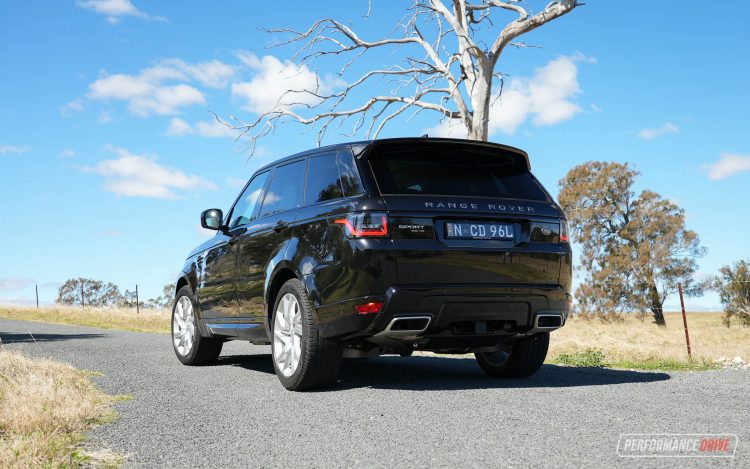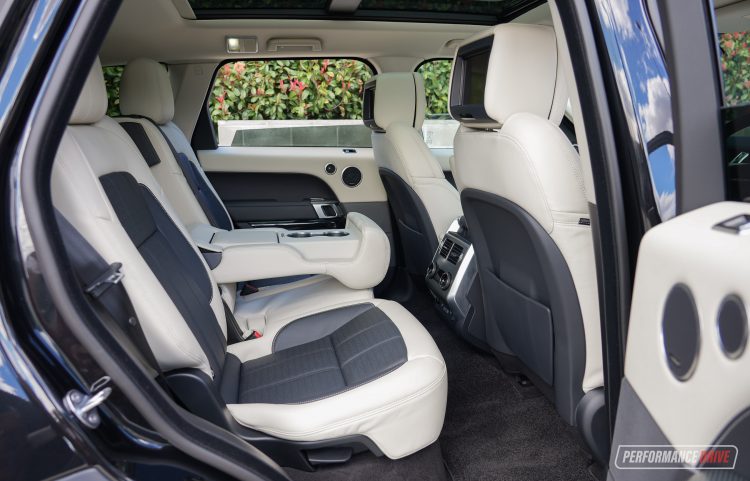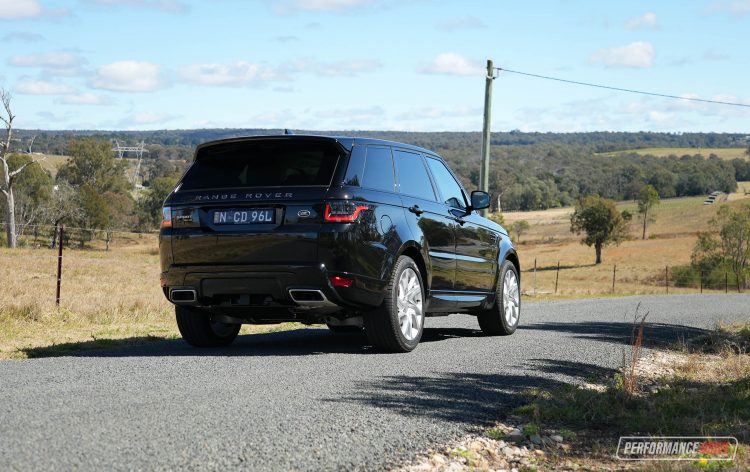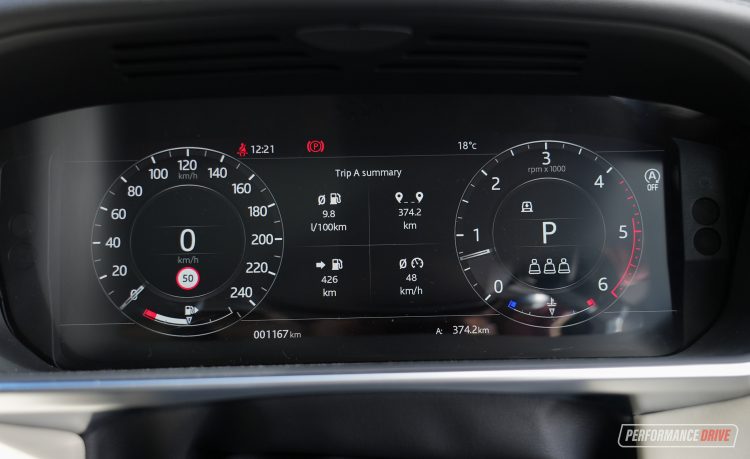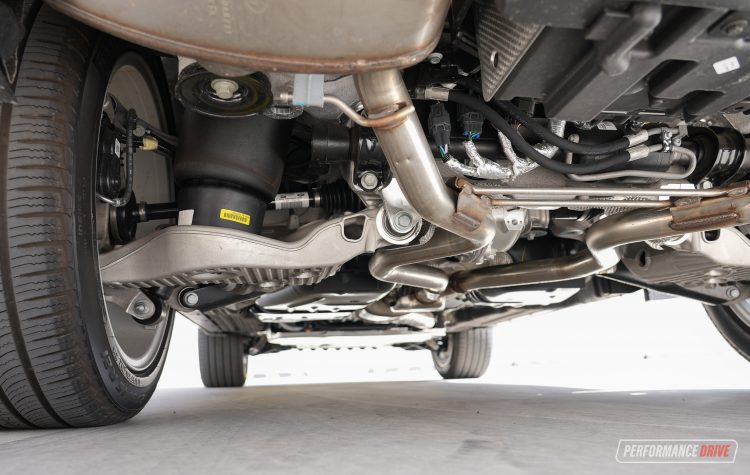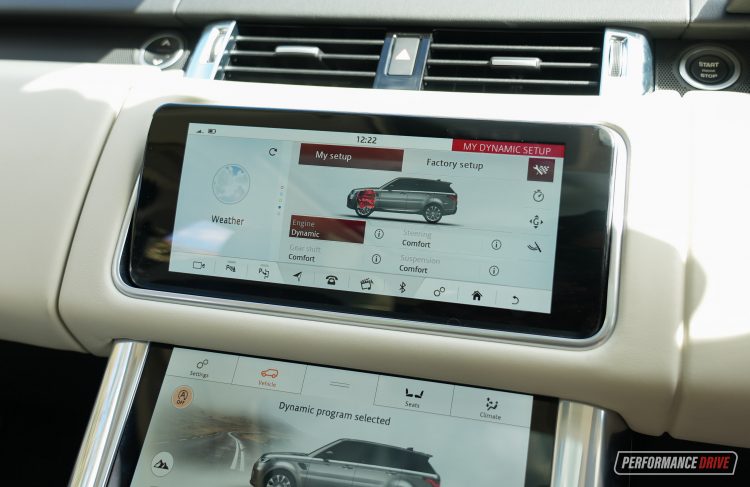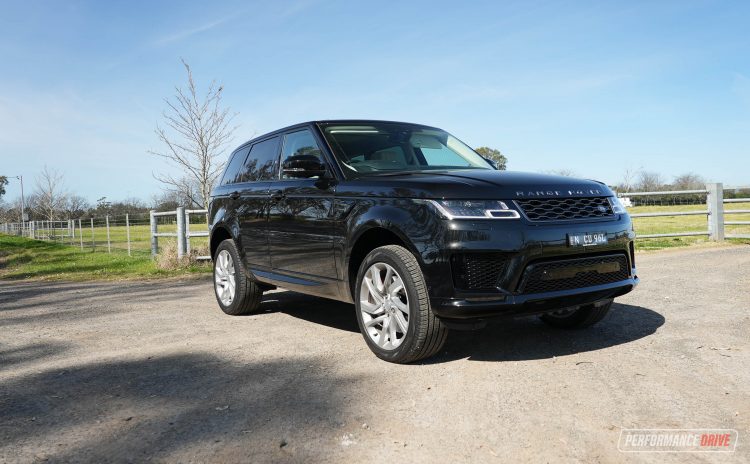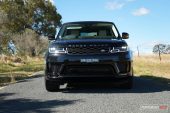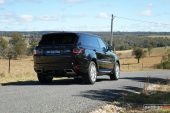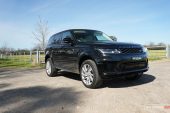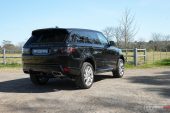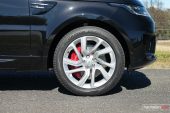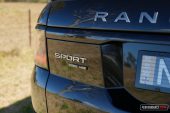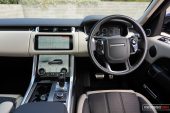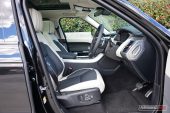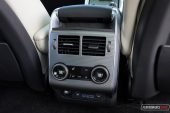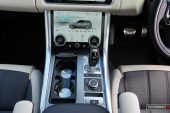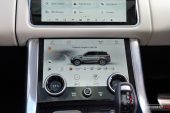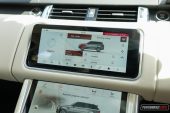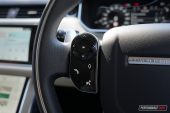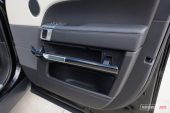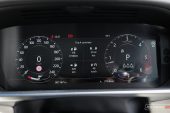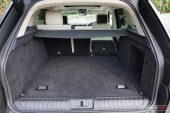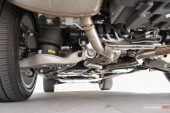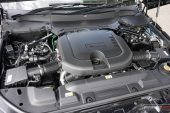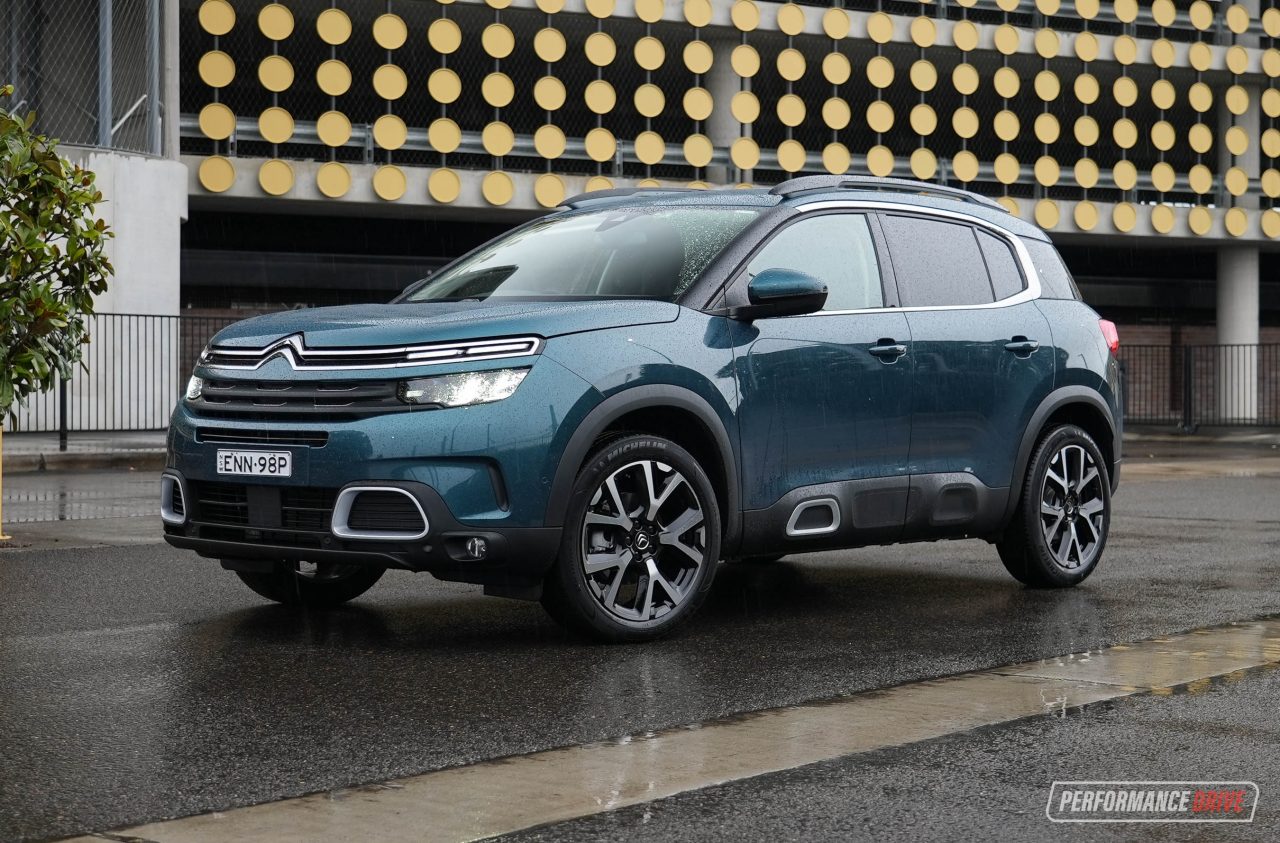It’s as fancy as a royal tea party yet as badass as a gangsta rapper, and as practical as a wheel barrow. The 2021 Range Rover Sport welcomes a svelte D350 inline-six diesel option, and receives a decent boost in in-car tech just to ensure it remains the most desirable SUV in its class. Can these beautiful beasts ever put a foot wrong?
There is a huge variety of trim levels and engine options to choose from, but for 2021 the company has tried to refine the lineup so it’s easier to decipher. This D350, which is the new flagship diesel option (replacing the SDV8, an SDV6), is only available in SE and HSE guise. Likewise, the lower-spec engine option is also only available in SE and HSE trim. Others come in Autobiography trim as well, and there’s the fire-breathing SVR at the top.
Prices start from $162,010 for this HSE R-Dynamic, which is about $3000 more than the 2020 SDV8 HSE Dynamic predecessor. You can get into a 2021 Range Rover Sport from $108,010 though, if you’re happy to go for the base Si4 SE 2.0T (all excluding on-road costs).
2021 Range Rover Sport D350 HSE – THE SPECS
[column width=”47%” padding=”6%”]Engine: 3.0-litre twin-turbo inline-six diesel MHEV
Output: 258kW@4000rpm / 700Nm@1500-3000rpm
Transmission: Eight-speed auto
Drive type: Four-wheel drive with dual-range, active differential
Wheels: F & R: 21×9.5, 275/45
ANCAP: Not tested
Tare weight: 2139kg
Power-to-weight: 8.29:1 (kg:kW)
Official fuel economy: 8.4L/100km
Economy during test: 9.8L/100km[/column] [column width=”47%” padding=”0″]Fuel capacity/Type: 8.4L/Diesel
Power efficiency: 30.71kW:L/100km
0-60km/h: 3.38 seconds*
0-100km/h: 6.69 seconds*
60-110km/h: 4.40 seconds*
1/4 mile: 14.81 seconds at 156.1km/h*
Max acceleration: 0.748g
100-0km/h braking: 3.22 seconds at 41.59 metres*
Max deceleration: -1.105g
Decibel at idle: 45*
Peak decibel at 60-100km/h: 75*
Priced from: $162,010[/column][end_columns]
* Figures as tested by PerformanceDrive on the day. Factory claims may be different
2021 Range Rover Sport D350 HSE – THE PACKAGE
This cabin feels fit for royalty. It is supremely comfortable and luxurious, and with the adjustable ride height suspension it is easy to get in and out. Once in, your attention is immediately drawn to the twin touch-screens which cascade down the dash. Although they are stunning, the current Sport misses out on JLR’s latest – and superior, in our opinion – Pivi Pro operating system.
Here the upper screen is for the main media and vehicle controls, and provides access to the off-road settings and configurable drive modes. The screen is slightly curved to reduce glare, and the graphics are crisp and displayed in a cool and calm colour palette. Compared with Pivi Pro though, you do have to endure some loading lag.
The lower screen is beautifully presented, featuring integrated climate control dials with changeable inner screens. This screen is mainly for the climate control, but also covers various vehicle settings and provides an animated menu for the drive modes.
This test vehicle is fitted with the optional 20-way power-adjustable front seats with winged headrests, featuring a lovely massage function. Imagine yourself sitting nice and perched up, with the iconic arm rest lowered supporting a perfect resting position, and a soothing range of balls and pressure pads slowly kneading your back; motoring has never been so relaxing. These seats will set you back around $6800, though. But hey, you’ve come this far.
Rear seat passengers can be treated to an entertainment package as well, with twin touch-screens and separate headphones, costing about $5250. You can also get heated and cooled outer seats and three-zone climate control. There’s heaps of space back here, with more than enough headroom for most people and ample legroom. And thanks to an almost completely flat floor, even the centre seat position offers decent space.
The boot is big enough to accommodate any business trip or family getaway, offering 780 litres or up to 1686L with the rear seats folded down. Underneath the floor you’ll find a full-size spare wheel. Yep, a 21-inch spare wheel is tucked under there. Obviously that’s not ideal if you suffer a flat in muddy conditions as you’ll have to stuff the muddy flat back in there. But it is great to have a full-size spare.
2021 Range Rover Sport D350 HSE – THE DRIVE
This newish 3.0-litre twin-turbo inline-six diesel engine does come with JLR’s latest mild-hybrid technology, running a 48-volt electrical system. One of the ‘turbochargers’ is actually an electric supercharger, which saves some weight and helps to provide great low-end response. It produces an impressive 258kW at 4000rpm, and a meaty 700Nm between 1500-3000rpm.
Officially, the average consumption is 8.4L/100km. That’s actually more than the 2020 SDV6 predecessor, which developed 225kW/700Nm, stamped at 7.8L/100km. Although the fine print says this new model is tested under the same ADR 81/02 protocols, we suspect there is some translation loss with the newer WLTP testing system, which is designed to find results that are closer to real-world experiences. And anyway, the D350 technically replaces the old SDV8, and that developed 250kW/740Nm and offered an average consumption of 9.4L/100km.
Performance has improved compared with the old SDV8, even with only 8kW more and 40Nm less. Land Rover claims 0-100km/h comes up in 6.9 seconds, bettering the old SDV8’s official claim of 7.3 seconds. During our testing in the real world, using a Vbox Sport data-logger, we saw the sprint come up in an exciting 6.69 seconds. That’s a very respectable time for a big SUV that has a tare weight of 2139kg. According to the specs this is 20kg lighter than the equivalent SDV6 HSE from 2020, and 205kg lighter than the SDV8 HSE.
During our week with this model we averaged 9.8L/100km, and that included performance testing. That’s really not too bad considering the sheer size and weight of this beast. And not forgetting that hot hatch performance. However, we can’t help but wonder what the real benefits are from that mild-hybrid system, at least simply looking at the on-paper specs. The average emissions are 222g/km, up from 204g/km in the old SDV6, but down from 247g/km in the SDV8. Again though, this could be due to the newer testing systems in place since these older models were officially rated.
On the road this engine is so creamy-smooth. And quiet – you can hardly hear it when cruising along. Even during acceleration there is none of that off-putting clatter or rattle that you used to get from diesels. This is pretty much as refined and as delightful as the petrol options. But since you have a massive 700Nm available just off idle, it means you merely lean on the throttle to get up to highway speeds, and you can perform effortless overtaking exercises.
With air suspension, the ride quality is literally like driving on air. Even poorly-surfaced country roads are absorbed with utter compliance. On dirt roads and through potholes, it’s hard to even notice the surface change. You can raise the ride height at the touch of a button, too, providing up to 278mm of ground clearance.
Although these 21-inch wheels and the 275/45 Pirelli Scorpion Zero tyres aren’t absolutely ideal for off-roading, they suffice on rough dirt roads and through slippery mud. If you are planning more adventurous journeys Land Rover does offer a range of smaller wheels and taller profile tyres if you like.
In the bends the big weight, and relatively high centre of gravity compared with other premium SUVs, does mean there is some body lean. It doesn’t like changing directions as swiftly as some of the German rivals. However, those are left in the dust when it comes to off roading, so that’s just a trade-off you’ll need to decide to suit your priorities.
There are a number of drive modes to select from, including a custom mode. In the sporty Dynamic setting it does tie itself down and feel more committed. Whatever the mode though, there is always a reassuring sense of solidness on the road. It feels confident and immovable. The steering is also nicely weighted and direct enough, without being touchy.
2021 Range Rover Sport D350 HSE – THE VIDEO
2021 Range Rover Sport D350 HSE – THE VERDICT
We can see why the Range Rover Sport is such a desirable and dreamy machine. No other SUV in its class is able to make you feel as good and as empowered when behind the wheel. And it’s not just a show pony; this offers genuine off-road capability. The in-car technology, and how it is integrated into the interior design in particular, should make most rivals nervous.
As for this new D350 engine? We think it is the pick of the bunch. For this style of vehicle, the effortless low-end grunt matches perfectly. It also offers decent real-world economy (considering the 2139kg tare weight), and real hot hatch performance. It is also serenely quiet for a diesel, and silky smooth.
[column width=”47%” padding=”6%”]PROS:
– Sublime comfort and command behind the wheel
– D350 is creamy smooth, impressive performance
– Serious off-road preparation
– Still looks both badass and majestic
– HSE bundles in loads of features; options list not as daunting[/column] [column width=”47%” padding=”0″]CONS:
– Touch-screen lags a bit, misses out on JLR’s latest Pivi Pro
– Don’t expect huge things from mild-hybrid tech in terms of economy[/column][end_columns]
As always, if you’re thinking about buying a new car don’t forget to click here to speak with our car buying specialists.

